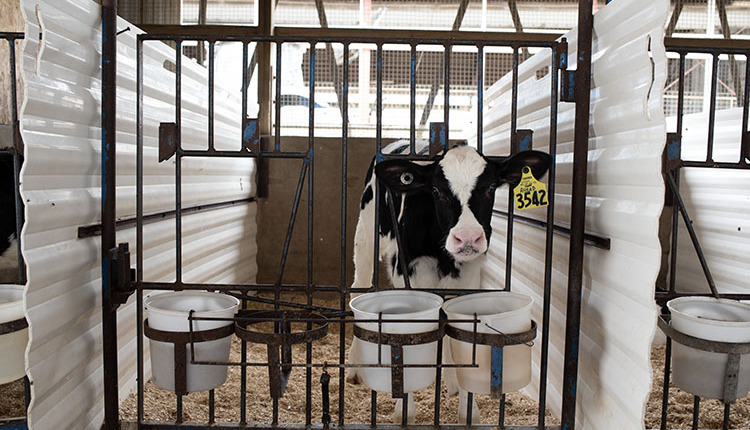
Depending on available sources of starch and sugar, diets for dairy cows might look quite different across the country. It also begs the question, how much sugar could we feed? Is there a positive response to production and rumen function when we swap out starch sources for sugar?
Earlier this year, we completed a project evaluating the effect of varied concentrations of starch and sugar in the diets of lactating cows. To accomplish this, we fed two different diets: one with a “low” amount of sugar (3.6% of dry matter, DM) and “high” amount of starch (26.3% of DM) and another with a “high” amount of sugar (5.9% of DM) and "low" amount of starch (23.6% of DM). These labels are all relative to each other and not necessarily what we would consider to be the extremes across the industry.
Across the diets, we provided a combination of sources to provide starch (steam-flaked corn and corn meal) and sugar (sugar and molasses). The total amount of nonstructural carbohydrates (starch plus sugar) was the same in both. The diets contained approximately 60% forage, 16.4% crude protein, greater than 9% rumen degradable protein, and 29% neutral detergent fiber.
Production performed well
We measured intake, milk yield and composition, rumen fermentation, total tract digestibility, and methane of cows fed these diets. Cows fed the higher sugar diets tended to eat just under 1 pound more dry matter (60.9 pounds per day versus 60.1 pounds) than cows that ate the lower sugar diet while producing the same amount of milk (99 pounds per day). As a result, cows fed the lower sugar diet had greater feed efficiency (1.65 versus 1.62). Cows fed the higher sugar diet did have higher milkfat production (4.05% versus 3.97%) and higher de novo and mixed fatty acid concentrations in the milk.
Overall, cows produced well on both diets with an average total solids per cow per day of 7.08 pounds for cows fed the low sugar diet and 7.13 pounds for cows fed the high sugar diet. Cows fed the high sugar diet had more butyrate in the rumen, which is in line with previous research and may support the higher milkfat levels.
Total tract digestibility of dry matter, organic matter, and neutral detergent fiber was higher for cows fed the lower sugar diets. There was no difference in methane yield or intensity between the diets.
This study did not test the true limits of how much sugar can and has successfully been included in lactating cow diets upward of 8% to 12% DM. There may be additional benefits to feeding higher concentrations of sugar in the diets, especially if a high sugar feedstuff is readily available, which could be further investigated.







